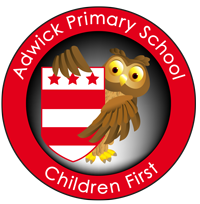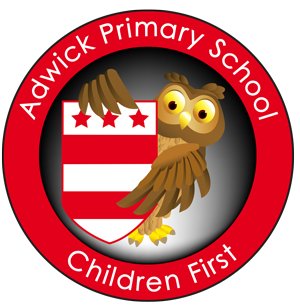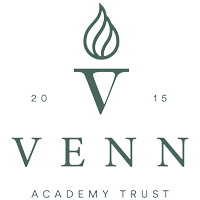Reading curriculum statement
Curriculum overviews:
Curriculum DESIGN/ INTENT
Curriculum coverage
The school’s curriculum meets the statutory requirements of the EYFS Statutory Framework and the National Curriculum. This is studied by all pupils in their relevant Key Stage.
After researching various approaches to reading, to meet our pupils’ needs, the school has created a teaching structure of reading to deliver our reading curriculum. This structure has been created based on the recommendations from the EEF guidance reports for “Improving Literacy” in EYFS, KS1 and KS2. It is correlated against the National Curriculum’s objectives to ensure that our pupils study the full Early Years curriculum and National Curriculum for reading.
Coherently planned and sequenced
Reading is prioritised to allow pupils to access the full curriculum offer. A rigorous and sequential approach to the reading curriculum develops pupils’ fluency, confidence and enjoyment in reading. The sharp focus on ensuring that younger children and those at the early stages of reading gain phonics knowledge and language comprehension necessary to read, and the skills to communicate, gives them the foundations for future learning. This is done through the adoption of the Read Write Inc phonics programme (RWI). At all stages, reading attainment is assessed and gaps are addressed quickly and effectively for all pupils. Reading books connect closely to the phonics knowledge pupils are taught when they are learning to read.
All children accessing phonics use RWI Book Bag Books, at their level of phonics attainment, as their home reading book. As children complete the RWI Phonics programme, they are assessed using Accelerated Reader (AR) to continue to closely match books to their reading level.
Documentation that underpins this, and that outlines a rigorous and sequential structure, has been devised by the school for Teachers and Literacy Leaders to use so that they have a firm and common understanding of the school’s curriculum intent.
This documentation is saved centrally in our electronic curriculum handbook, and includes:
- Teaching Structure of Reading Curriculum
- Progression in Reading, including Critical Skills and Knowledge
- Reading Question Types
- A Guide to Choosing the Right Book
Teaching for Mastery – ambition and equitable opportunities for all
We deliver an ambitious curriculum for all pupils by following a ‘teach to the top’ approach (based on age-related EYFS Statutory Framework and National Curriculum expectations) through Mastery Teaching via the school’s Mastery Learning Model as outlined in the school’s Mastery Learning document.
Teaching for mastery is also central to the EEF guidance. This supports our belief that, although pupils vary widely in their learning rates and modalities, nearly all pupils can reach a high level of achievement. We achieve this by keeping learning outcomes constant for all pupils (with the exception of extreme SEND pupils who may be on an individualised curriculum) but vary the time, support and resources needed for pupils to become proficient or competent at these objectives.
There are no preconceptions or limitations placed on a pupil’s context, ability or the progress they can make. This provides them with the same opportunities as their peers, not only on a local level but also on a national level. Therefore, all pupils, regardless of background or starting points, have equitable access to the full curriculum.
It is expected that the vast majority of pupils will achieve academic competency:
- We define academic competency as Stage 3 or above in the school’s 4 stages of competence/learning table, outlined in the school’s Mastery Teaching document.
- We define the vast majority as approximately 90% of pupils, dependent on cohort and taking into account the number of EHCP and extreme SEND (on individualised plan).
- For any pupils who do not reach the required level of academic competency/learning (Stage 3 or above), they will be further supported through additional focused intervention to secure academic competency. This will be achieved by corrective instruction through reading and phonics interventions in-line with our Mastery Teaching Model. Any pupils on an individualised learning plan will work on their individualised targets.
In phonics, in order to move to the next colour band in the RWI programme, the previous colour band must be achieved. In reading, learning focuses on the key skills and knowledge that the school deems non-negotiable (see critical skills and knowledge document).
Reciprocal Reading and Fluency approach
- Support pupils to develop fluent reading capabilities
- Fluent readers can read quickly, accurately and with appropriate stress and intonation.
- A fluent reading style supports comprehension because pupils’ limited cognitive resources are freed from focusing on word recognition and can be directed towards comprehending the text.
- Most pupils will benefit from being explicitly taught fluency rather than just being encouraged to practise individually. The following approaches are well-supported by evidence:
- Guided oral reading instruction – fluent reading of a text is modelled by an adult or peer and pupils then read the same text aloud with appropriate feedback; and
- Repeated reading – pupils re-read a short and meaningful passage a set number of times or until they reach a suitable level of fluency.
- Echo reading will be used to provide the pupils with a good model of fluency, focusing primarily on prosody (intonation, pitch, volume, pace).
- Teach reading comprehension strategies through modelling and supported practice.
Reading comprehension can be improved by teaching the following strategies which should be modelled and practised to ensure they become embedded and fluent.
Prediction
- Pupils use information from a text (including titles, headings, pictures, and diagrams) and their own personal experiences to anticipate what they are about to read or predict what might happen as a text is read (what comes next).
- Having to predict causes pupils to pay close attention to the text, which means they can closely monitor their own comprehension.
Clarifying
- Pupils identify areas of uncertainty, which may be individual words or phrases, and seek information to clarify meaning.
- Some example strategies are: look at root word; context clues; logic; using the word class; dictionary.
Questioning
- Pupils generate their own questions about a text in order to check their comprehension. This is a more active approach than solely answering teachers’ questions.
- Having a discussion, building on each other’s responses to a question, allows children to develop a deeper understanding of the text.
Summarising
- Pupils describe succinctly the meanings of sections of the text. This causes pupils to focus on the key content, which in turn supports comprehension monitoring.
- This can be attempted using graphic organisers that illustrate concepts and the relationships between them using diagrams.
Inference
- Pupils infer the meaning of sentences from their context, and the meaning of words from spelling patterns.
Activating prior knowledge
- Pupils think about what they already know about a topic, from reading or other experiences, and try to make links.
- This helps pupils to infer and elaborate, fill in missing or incomplete information and use existing mental structures to recall.
Curriculum IMPLEMENTATION
Reading Timetabling
We teach phonics every day for EYFS and KS1 pupils. In addition to this, we also teach reading every day in EYFS, KS1 and KS2 pupils. This is outlined in the school’s curriculum timetables. See Teaching Structure of Reading Curriculum.
We also have extra sessions timetabled daily, for every year group, for reading for pleasure.
Pupils’ Work
The work given to pupils is demanding and matches the aims of the curriculum in being coherently planned and sequenced towards cumulatively sufficient age-related knowledge. See page 2 in Teaching Structure of Reading Curriculum.
In EYFS and Y1 in the autumn term, a reading record documents pupils’ discussions, this is for assessment purposes.
In KS1 and KS2, weekly recording of work is expected in reading. Pupils will independently record comprehension of a class text using retrieval or inference skills.
In EYFS, KS1 and KS2, all Reciprocal Reading lessons are oral.
The recording of Phonics work, is done in RWI books.
Assessment & Intervention
Staff use the Mastery Learning Model as a framework for Assessment for Learning (AfL) to check children’s understanding and identify misconceptions. This is done through Reciprocal Reading and comprehension tasks. Staff respond and adapt their teaching as necessary based on the outcomes of AfL strategies.
School based reading comprehension summative assessments for Y1 (from spring term), 3, 4 and 5 are carried out using reading Cornerstones tests and previous years’ published SATs papers for Y2 and 6. These are taken on a termly basis, with the exception of Y6 who are assessed half-termly in the Autumn and Spring term for to support them with test techniques and access arrangements. Access arrangements are also put in place for all year groups based on the Y6 criteria.
School based summative assessments for reading in Early Years (and Y1 in autumn term) are carried out on a termly basis by collating assessment information from the weekly reading records based on the Early Learning Goals (ELGs), which we have further broken down using the Development Matters document. These summative assessment tasks inform accurate best-fit judgements, based on what children know and can remember. (See Reading Record)
School-based phonics summative assessments are carried out on a half-termly basis using RWI assessment materials. This leads to children accessing phonics sessions closely matched to their phonic attainment.
End of key stage assessment judgements for the Early Years are based on teacher assessments using the ELGs from the EYFS Statutory Framework. Evidence for the ELG will come from attainment in RWI Phonics and from the weekly reading records based on the ELGs, which we have further broken down using the Development Matters document, collated throughout the academic year.
These are completed by YR teachers by the end of May and moderated by SLT before submission.
End of key stage assessment judgements for KS1 are based on teacher assessments using the KS1 SATs tests outcomes and the Standards & Testing Agency English Reading Teacher Assessment Framework (TAF). Evidence for the TAF will come from evidence in tests and from independent work in reading folders, collated throughout the academic year. These are completed by Y2 teachers by the end of May and moderated by SLT before submission.
End of key stage assessment judgements for KS2 are based on KS2 SATs tests outcomes. These are completed as per KS2 SATs timetable published by the Standards & Testing Agency.
Curriculum IMPACT
Attainment & Progress
The impact of the curriculum on what children know, can remember and do is strong. This is evidenced through overall outcomes and therefore:
By the end of each Key Stage, we want all pupils – regardless of context, background or starting points – to make rapid progress towards achieving age-related expectations and to be at least in-line with their peers nationally. Where this is not the case, any gap to their national peers is closing rapidly.
As a result, by the end of each key stage, all of our pupils, regardless of context, background or starting points, will be have the knowledge and skills that they need for the next stage of their education.
Pupils’ work
Across all key stages, the pupils’ work will show work of a consistently high quality, demonstrating what they know and can remember. Throughout school, pupils’ work will evidence rapid progress demonstrating that they are able to apply their reading skills and knowledge appropriate for their age, via weekly learning and summative assessments. This will consist of:
By the end of Foundation stage:
- To be able to read Purple RWI books. (10 specific phonemes – ay ee igh ow oo ar or air ir ou)
- To be able to read all set 1 and 2 red words.
(Set 1 I, the, my, you, said, your, are, be, no. Set 2 What, all, was, we, so, to, me, call, her, there, want, go, old, some, he.)
- To be able to read simple sentences that contain at least two common irregular words.
- To be able to read words with more than one syllable
- For every child to enjoy reading and be read to
By the end of key stage one:
- To read fluently (at least 100 words a minute with prosody)
- To read common exception words set 3 and 4
- To read accurately words that contain two or more syllables
- To read words containing common suffixes e.g. -s, -es, -ing, -ed, -er and -est
- To read words with simple contractions e.g. I’m, I’ll and we’ll
- For children to have an enjoyment of reading
- To discuss and express their views about a range of texts
- To show an understanding of books that they have read or have been read to them by making inferences, predictions, asking and answering questions.
- Children will have read a range of rhymes, poems, stories (fairy stories and traditional tales) and non-fiction texts.
By the end of key stage two:
- For children to have an enjoyment of reading
- To read for a wide range of texts for a variety of purposes
- To apply their growing knowledge of root words, prefixes and suffixes as listed in English Appendix 1.
- To be able to read and clarify new vocabulary using a range of methods e.g. context, root words, dictionaries.
- To make predictions, ask questions to improve their understanding, draw inferences and summarise main ideas
- To explain and discuss their understanding of what they have read
- Pupil’s writing is clearly shaped and influenced by the books they read and the authors they like.
- To discuss, compare and make recommendations based on books they have read.
- Children will have read a wide range of fiction (modern, from our literacy heritage), poetry, plays, myths, legends and traditional stories, non-fiction and reference books or textbooks.
Pupils’ attitudes to learning
Readers at Adwick, regardless of their age, have a positive reading attitude which is shown through resilience, confidence and application of skills taught through RWI and reading lessons.
From learning walks and pupil consultation, pupils will demonstrate:
- Confident, resilient and independent reading.
- Consistently positive attitudes and commitment to reading.
- High levels of motivation and an eagerness to join in.
- A deep level of engagement and sustaining high levels of concentration.
- They know how they learn effectively, and do so.
- Resilience to setbacks, demonstrating persistence in the face of difficulties, especially when working on challenging texts.
- They are prepared to take risks to achieve more.
- They learn through exploration of texts.
- They work together as a ‘Team’ to achieve their learning goals.
- They learn from each other through collaboration, reflection and peer challenge.
- Pride in their work and achievements.
“Extra-curricular Activities: Extra-curricular clubs are well attended, and pupils regularly go on school trips that enhance their classroom learning.“
“Broad Curriculum: Leaders provide a broad range of subjects, which are well-planned, helping pupils remember what they learn.“
“High Expectations from Leaders: School leaders have high expectations, understand what needs to improve, and staff work well together to share ideas and support each other.“
“Effective Pastoral Support: The pastoral team provides good support for vulnerable pupils, helping them stay safe and enjoy healthy relationships.“
“Pupils Enjoy School: Pupils are enthusiastic about their lessons and enjoy attending school.“
“Supportive and Safe Environment: Pupils feel safe, understand that bullying is rare, and know that adults are there to help if needed.“
“Focus on Reading: There is a strong emphasis on teaching reading, with high-quality training for teachers and effective support for pupils who need extra help.“
“Strong Early Years Provision: The early years provision is effective, with strong relationships between adults and pupils, a well-organized environment, and activities that enthuse children.“
“Engaged and Resilient Pupils: Pupils listen carefully, focus well on their activities, are keen to join discussions, and demonstrate resilience when facing difficulties.“
“Calm and Orderly Environment: The school environment is described as calm and orderly, with good behavior from pupils.“
“Ambitious for SEND Pupils: Leaders are ambitious for pupils with special educational needs, ensuring they receive good support and achieve well.“
“Effective Safeguarding: Safeguarding arrangements are effective, with staff understanding their responsibilities and providing good support for vulnerable pupils.“




